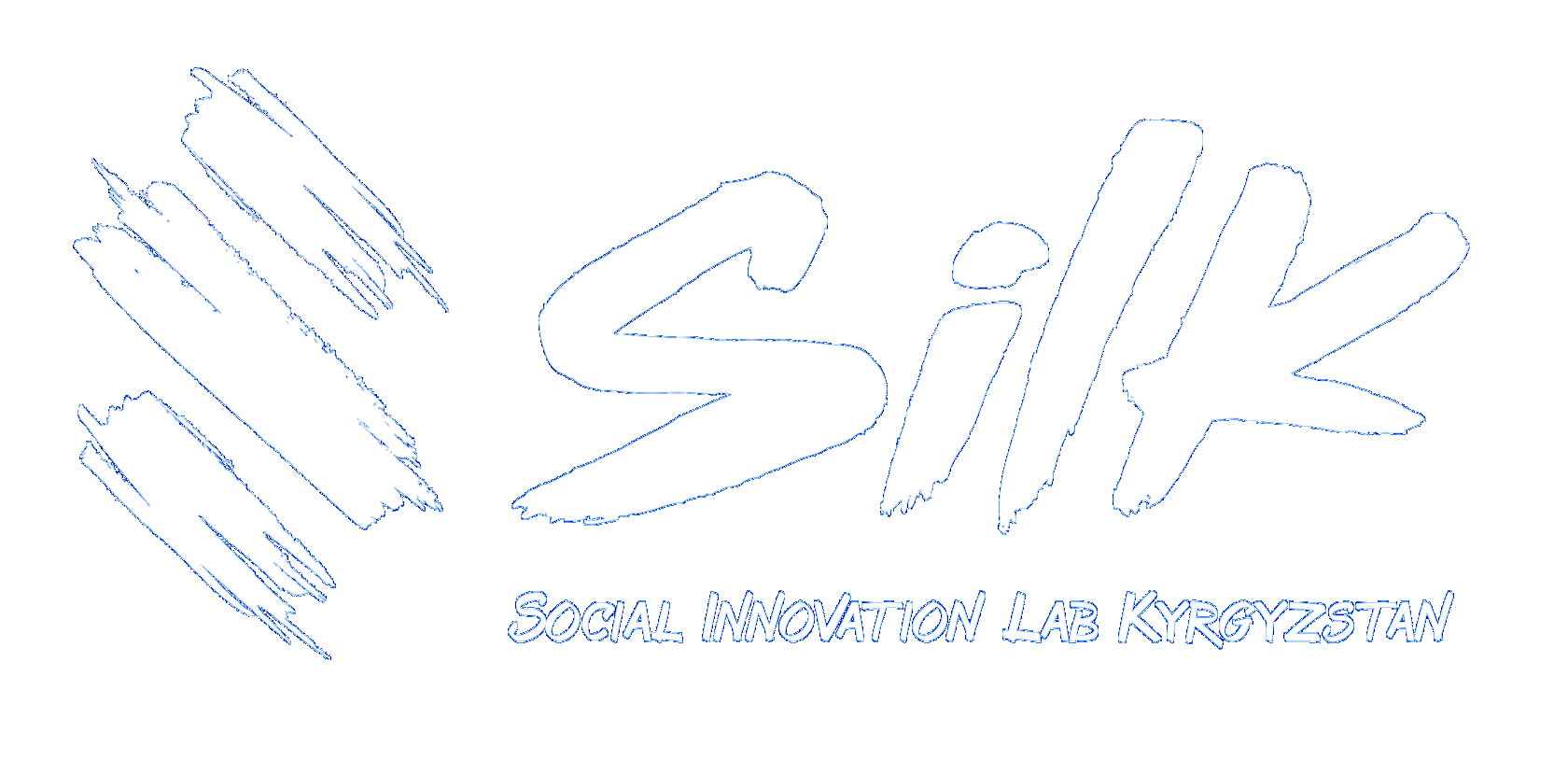Kok-Bishkek:
Developing the Vision for Blue and Green Infrastructure of the City
Emil Nasritdinov, Seth Fearey, Jamilia Baiborieva, Meder Ahmetov and Otabek Nigmatov

While working on the last research project, we came up with a new vision for our project. We decided that it was not enough to focus on rivers only and that we need to look at the wider conception of nature in the city and include green spaces into our analysis. In the process of discussing the focus of our research, we came up with the new concept – Kok Bishkek. The word “kok” in Kyrgyz language has several meanings and can be applied to several elements of nature: “kok asman” means “blue sky”, “kok suu” means “blue water”, but “kok terek” is “green tree”, while “kok taala” stands for “green field”. So, the word “kok” can mean both blue and green and generally in Kyrgyz culture, it is associated with everything natural and ecological.
Thus, we proposed that this word would ideally suit what this project tries to accomplish. In addition, we believed that using the traditional word from Kyrgyz language would help us promote the concept among city residents, administrators and politicians. It would be perceived much better than some longer and more technical titles. It has strong associations with nature and it is easy to remember and thus popularize. As the project progressed, we tested the new proposed title among various groups of city residents and saw that the concept was perceived well. We did not encounter any objections to it.
This report summarizes the work our research team carried out during the year. The project included a number of research activities. The first of the report summaries the results of social inventory, while the second part presents the project recommendations developed on the basis of this research.
In this part of our research, we focused on people. Our key goal was to first listen to community members and experts in order to understand their priorities and needs in their communities. The research team conduct both quantitative and qualitative research to find out the community's needs in building green spaces such as playgrounds, parks, and parklets, and blue spaces such as rivers, river-walks, canals, and open spaces next to rivers.
Questionnaire survey results



Citizens and rivers





Citizens and green spaces





Bishkek master plan and the need to engage community and popularize Kok-Bishkek


The SMM experts stressed that for the Kok Bishkek concept to be recognizable, it needs one strong visual symbol. Thus, it was recommended to engage artists in creating the logo of Kok Bishkek that would become a part of the information campaign and would make Kok Bishkek recognizable. The logo would have to be visually appealing, easily conveying the main idea of the project and be simple and replicable. Once the projects starts to be implemented, the logo can be used for marking the interventions on the ground for people to know that this work is done in the frameworks of Kok Bishkek. We had one session with students, artists and architects, where we brainstormed ideas for the logo and sketched some preliminary drafts. Here are three designs that we selected as potential designs for the logo.

Urban ecology
As for the vegetation along the river, the preference was given to wilder forms. The way the city administration treats green spaces in Bishkek is often perceived as too artificial: particularly with flowers of different colors planted in such a way as to form an ornamental pattern. Instead, rivers, parks and green spaces on the streets should have more authentic plant species. This way, we can talk about “real” nature in the city. For that landscaping should be kept to the minimum. It is recommended to make a good use of the interesting morphology of the riverbeds inside the concrete riverbanks, which often have very picturesque shape with water gently curving around the islands of stones and greenery. The banks along the river should also have more greenery in order to attract residents.

Water and irrigation

One proposal was raised several times in the meetings – to make a better use of water reservoirs located up the river between rivers and mountains. Bishkek receives quite a lot of water in the colder season when water is not distributed to the fields, but the city does not need water at this time either. So, reservoirs could store the water in winter times, so that this water could be used for irrigating Bishkek in the summer time. One unique proposal was made by the Chief Architect himself – to create the water reservoirs from the quarries also located in the Southern fringe of the city, up the stream. These are quarries of large sizes and they can hold significant amount of water, thus they could be of great help for watering green spaces of the city in the hot season.
Finally, a proposal was made about the need to use the underground water for irrigation. Ground waters are already very high in the lower Northern parts of the city, where in fact, they are even the reasons of flooding. However, because Bishkek is located on the slope and its topography recedes from the mountains in the North to the valley of Chu River in the South, the distance to ground waters in the higher areas of the city could be quite long – up to 60-80 meters. Nonetheless, it is possible to dig the wells and such work has already been done for the two Yntymak parks, which are watered with the underground waters. For the more efficient use, this water is distributed not via open irrigation ditches, but via the system of water sprinklers. Kalicha Omuralieva, the head of Bishkek Parks proposes that such the same method can be introduced in all parks of the city, but it is important to use better quality equipment for sprinklers.
Parks, rivers and urban mobility


In the section below we summarize the main recommendations developed in the project on the basis of results from the social inventory. We start by introducing the larger conceptual vision for the blue and green spaces of the city and then specific recommendations we need needed to implement this vision.
Conceptual Vision of Rivers: Bishkek Eco-Belt


One of the international examples that served as an inspiration for Bishkek Eco-Belt vision was the Atlanta Beltline project that used a former railway corridor and railway easements around the core of the city of Atlanta, Georgia, USA to create a 22-mile loop for pedestrians and bikers. The project was very simple in its vision, yet, it was very successful and led to all kinds of new developments taking place along the Beltline. It has 5 open trails and it connects 7 public parks and 45 neighborhoods.
Lobbying of ecological water runoff
Uninterrupted passage for pedestrians and cyclists along the rivers


Turning the Osh Bazaar to face the river
Rehabilitation of damaged banks and dissipation walls

Greening the river banks


